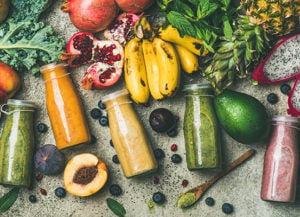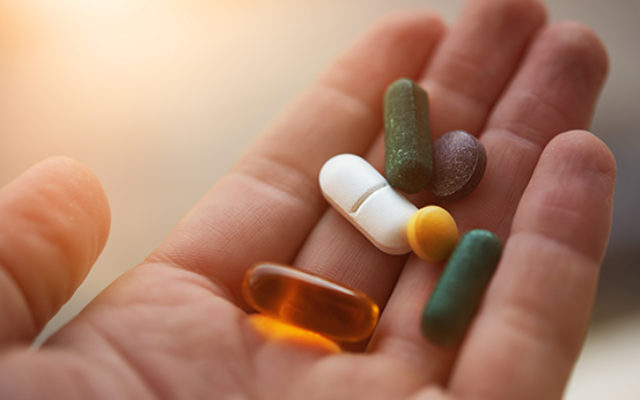Fasting for days?
Juicing green vegetables?
Grimacing after herbal tonics?
Surviving off lemon juice and maple syrup?
Detox programs can take many weird and wonderful forms, with as many options as people’s opinions of them!
Those who believe in detox claim it can reduce or eliminate symptoms such as brain fog, irritable bowel syndrome, fatigue and joint pain; while others strongly assert there is no need to detox, and it’s simply marketing hype.
 So Where Do You Stand?
So Where Do You Stand?
Confusing and misleading information certainly exists around what a detox is, how it should look, what it achieves, and what results are possible from completing one.
However, whether you’re detox-converted or detox-doubtful, it’s vitally important to understand what a comprehensive detox actually looks like, and what it encompasses. This ensures you get the most out of your detox, and don’t fall victim to regimes that promise the world…but leave you hungry, out of pocket, and feeling no better than when you started!
A professionally designed clinical detoxification program comprises two main aspects:
- It reduces the toxic burden on your body; lessening your exposure to harmful everyday toxins by modifying your diet and lifestyle; and
- Offers strategically selected natural herbs and nutrients able to support healthy toxin elimination, whilst also increasing your body’s resilience to toxins for the future.
A truly comprehensive detoxification program will address both of these factors, as optimal results cannot be achieved from just addressing one or, as is often the case with fad detoxes, none of these.
So how does a professionally designed and supported detox program address these two factors?
1. Reduce the toxin burden on your body.
This first step of a clinical detoxification program is to follow a specific detox diet that guides you with a simplified list of foods you can enjoy, and foods to avoid during your program.
Common foods temporarily eliminated from your diet during a detox are:
- Wheat/gluten;
- Dairy;
- Caffeine;
- Sugar;
- Alcohol; and
- Red meat.
Don’t worry, it’s not forever!
Restricting these foods reduces inflammation and oxidative stress within your body, lessening the demand on your liver as well as your digestive and immune systems.
 Reducing toxin burden also means finding areas within your home or lifestyle that could increase your toxin exposure. For example, hormone disrupting chemicals (also referred to as endocrine disrupting chemicals or EDCs) can be found in plastics, synthetic skincare and make-up, unfiltered water, and home cleaning products, so should also be eliminated. Using your detox program as a time to switch over to natural alternatives is a fantastic opportunity to reduce your toxin burden ongoing, for lasting benefits beyond your detox program timeframe.
Reducing toxin burden also means finding areas within your home or lifestyle that could increase your toxin exposure. For example, hormone disrupting chemicals (also referred to as endocrine disrupting chemicals or EDCs) can be found in plastics, synthetic skincare and make-up, unfiltered water, and home cleaning products, so should also be eliminated. Using your detox program as a time to switch over to natural alternatives is a fantastic opportunity to reduce your toxin burden ongoing, for lasting benefits beyond your detox program timeframe.
2. Support toxin elimination and increase your body’s resilience to toxins.
 While you eliminate items increasing toxicity within the body, it’s important to also bolster your body’s capacity to detoxify.
While you eliminate items increasing toxicity within the body, it’s important to also bolster your body’s capacity to detoxify.
Focusing on a diet rich in plant-based wholefoods (e.g. colourful vegetables, fruits, lean proteins, eggs, nuts and seeds) is ideal for supplying the body (the liver especially) with the vitamins, minerals and phytochemicals that support its capacity to detoxify substances and eliminate them from the body. Natural detoxification can also be amplified by simple lifestyle measures such as dry body brushing, sweating (e.g. exercise and saunas) and ensuring adequate hydration.
Appropriate supplementation is an integral part of a clinical detox program, as targeted nutrients and herbal medicines can greatly assist and amplify your body’s detoxification capacity. Ingredients to look for include:
- Vitamins B6, B12 and folate – required by the liver to neutralise and transform toxins in preparation for elimination;
- Milk thistle – a herb that increases the production of the body’s primary antioxidant, glutathione, which improves the ability of the body to offset the damage caused by toxins;
- Amino acids – liver detoxification pathways require good quality protein (which is made up of amino acids) to bind to toxins and facilitate their removal;
- Cape jasmine – protects the liver and binds to specific gut-induced toxins, eliminating them and reducing the inflammation they can cause;
- Glutamine and zinc – nutrients that protect and heal the lining of the gut.
As we are each unique, it’s vitally important to take a tailored approach to detoxification. Remember this when faced with a Health Food store detox-in-a-box that promises the world, but cannot take into consideration your individual health status. A Natural Healthcare Practitioner can offer a comprehensive and personalised clinical detox program for you, ensuring:
- All aspects integral to successful detox are addressed;
- Your goals are factored into your program; and
- You get results!
Remember, a truly comprehensive detox will assist you to reduce you exposure to toxins, while also boosting their elimination for your body. It is this holistic combination, personalised to your needs that is the recipe for results and vitality.
Leave a Reply